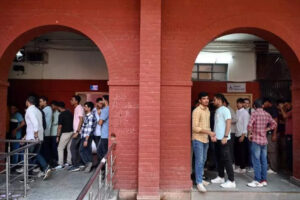Comprehensive News Analysis for April 1, 2025
Maharashtra Sets Up Dedicated Cell for Mercy Petitions
The Maharashtra government has established a dedicated cell under the Additional Secretary (Home) to handle mercy petitions filed by death row convicts. This move follows a Supreme Court directive for all states to set up such cells to expedite the processing of mercy petitions, which can have a “dehumanising effect” on convicts if delayed. Mercy petitions are formal requests for clemency submitted by convicts after exhausting all judicial remedies, seeking pardon, commutation, or remission from the President or Governor.
The Constitution grants the President (Article 72) and Governors (Article 161) the power to grant pardons or commute sentences. However, there is no fixed time limit for the President’s decision on these petitions. The philosophy behind mercy petitions includes upholding the right to life, rectifying judicial errors, and adhering to international human rights standards.
Elon Musk’s Neuralink to Implant ‘Blindsight’ chip in first human by 2025
Neuralink, a brain-chip startup founded by Elon Musk, plans to begin human trials of its “Blindsight” device by the end of 2025. This brain-computer interface (BCI) aims to restore vision in individuals who are completely blind by bypassing the eyes and optic nerves. The device uses a microelectrode array implanted in the visual cortex to process visual data from a camera feed, stimulating neurons to enable perception of images.
BCIs are systems that acquire brain signals, analyze them, and translate them into commands for external devices. They can be categorized as invasive, non-invasive, or partially invasive based on how they interact with the brain. Applications of BCIs include assistive technology for paralysis, stroke rehabilitation, and cognitive enhancement, though they face challenges like signal noise and ethical concerns.
Vibe Coding
Vibe coding is an intuitive approach to software development that uses large language models (LLMs) like ChatGPT to generate and debug code without deep programming expertise. Coined by Andrej Karpathy in February 2025, this method emphasizes creativity and rapid prototyping over structured programming logic. It allows non-programmers to build apps or websites and serves as a gateway for beginners to transition into serious coding.
However, vibe coding raises concerns about code quality, efficiency, and security risks, as AI-generated code might introduce vulnerabilities. It is not suitable for critical applications requiring precision and reliability.
India, US To Jointly Design, Manufacture Nuclear Reactors In India
The US Department of Energy has granted approval for a US company to design and manufacture nuclear reactors in India. This development follows the India-US civil nuclear agreement signed in 2007. India insisted on local design and manufacturing, which the US has now agreed to. The partnership involves US and Indian firms jointly producing Small Modular Reactors (SMRs), with the US placing conditions on the transfer of jointly-designed nuclear plants.
SMRs offer advantages like smaller size, reduced capital investment, and incremental power additions. This collaboration strengthens US-India relations and gives India access to advanced nuclear technology, enhancing its private sector’s capabilities in the nuclear sector.
Energy Statistics India 2025
The Ministry of Statistics and Programme Implementation has released “Energy Statistics India 2025,” highlighting India’s energy scenario. The total energy supply is approximately 1,800 Million Tonnes of Oil Equivalent (MToE), with a 4.5% annual increase. The energy mix includes coal (48%), oil (28%), natural gas (8%), renewables (12%), and nuclear (4%). India aims to increase its renewable energy share to 25% by 2030 and reduce carbon emissions.
Key initiatives include the National Hydrogen Mission, the Perform, Achieve, and Trade (PAT) Scheme, and the Faster Adoption of Electric Vehicles (FAME-III) scheme. Despite progress, challenges persist, such as dependence on fossil fuels and infrastructure bottlenecks for renewable energy integration.
Why Are Tensions High in the Arctic?
The Arctic has become a geopolitical hotspot due to climate change, resource competition, and strategic rivalries. The region holds significant natural resources, including oil and gas, and new navigational routes are emerging as ice caps retreat. Russia, China, and Western nations are competing for influence, with tensions heightened by military build-ups and territorial claims.
The Arctic Council promotes environmental protection and scientific cooperation among eight member nations. India, as an observer, conducts research on climate patterns and marine biodiversity through the National Centre for Polar and Ocean Research (NCPOR).
Bodh Gaya Temple
Buddhist monks and organizations have been protesting the Bodh Gaya Temple Act, 1949, demanding exclusive control over the Mahabodhi Temple, a sacred site where Buddha attained enlightenment. The current management committee includes the District Magistrate of Gaya as its chairperson, which Buddhists want to replace with a Buddhist-only committee.
The Mahabodhi Temple, built by Emperor Ashoka in 260 BCE, is a UNESCO World Heritage Site. Historically managed by Buddhists until the 13th century, its management was transferred to a joint committee post-independence.
Tribhuvandas Patel
The Lok Sabha has passed a Bill to establish the Tribhuvan Sahkari University in Anand, Gujarat, named after Tribhuvandas Kishibhai Patel, known as the “father of the cooperative movement” in India. Patel played a pivotal role in the White Revolution by founding the Kaira District Cooperative Milk Producers’ Union, which led to the establishment of Amul.
Patel’s contributions were recognized with the Ramon Magsaysay Award in 1963 and the Padma Bhushan in 1964. His legacy includes the creation of the National Dairy Development Board (NDDB) and the Gujarat Cooperative Milk Marketing Federation (GCMMF).
Sarhul Festival
The Sarhul festival is celebrated by Adivasis in Jharkhand and the Chhotanagpur region to welcome the new year and spring. It symbolizes the union of the Sun and Earth, marking the beginning of agricultural activities. The festival is centered around the Sal tree, revered as the abode of Sarna Maa, a deity protecting villages from natural forces.
Sarhul is celebrated by tribes like Oraon, Munda, Santal, Khadia, and Ho, each with unique traditions. The festival has evolved from a hunting tradition to one focused on agriculture.
Nankai Trough Megaquake Warning
Japan is bracing for a potential megaquake in the Nankai Trough, a subduction zone where the Philippine Sea Plate is being forced under the Eurasian Plate. The Japanese government estimates a 70-80% chance of a magnitude 8-9 earthquake within the next 30 years, which could cause devastating tsunamis and significant loss of life.
Historical data shows major quakes in this region occur every 100-150 years. Japan is preparing for such an event by enhancing its disaster response capabilities.
P4 Initiative
The Andhra Pradesh Chief Minister launched the ‘Zero Poverty – P4’ initiative under the Swarnadra 2047 vision. P4 stands for ‘Public, Private, People Partnership,’ aiming to achieve a poverty-free Andhra Pradesh by 2029. The initiative includes providing house sites, sanitation facilities, LPG connections, reliable power supply, and promoting entrepreneurship in every family.
The program targets economically weaker families, with well-off contributors providing financial support or mentorship. It aims to mobilize public-private participation and foster inclusive economic growth.
Asbestos
The Global Asbestos Awareness Week is observed annually during the first week of April to raise awareness about the health risks associated with asbestos. Asbestos is a group of fibrous minerals used in various applications due to its durability and resistance to heat and chemicals. However, inhaling asbestos fibers can lead to chronic health conditions like asbestosis and mesothelioma.
Efforts are being made globally to phase out asbestos use and promote safer alternatives.
Defence Exercises in News
The 4th edition of Exercise Tiger Triumph, a bilateral India-US Humanitarian Assistance and Disaster Relief (HADR) exercise, has commenced in Visakhapatnam. This exercise aims to develop interoperability for conducting HADR operations and establishing a Combined Coordination Center for rapid response during crises.
Additionally, the Indian Air Force is participating in Exercise INIOCHOS-25, a multinational air exercise hosted by Greece’s Hellenic Air Force. This exercise integrates multiple air and surface assets under realistic combat scenarios to enhance air warfare capabilities.
Naini Lake
Naini Lake in Uttarakhand has recorded a water level of 4.7 feet, marking a five-year low. The lake has reached its zero level more than 10 times since 2000, compared to just twice in the 1900s. Naini Lake is a natural freshwater lake of tectonic origin, situated in the Kumaon region.
Efforts are needed to address the declining water levels and ensure sustainable management of this critical ecosystem.
Source link



